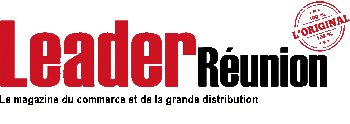Even in the digital age, handwritten documents occupy an important place in the world of work, especially in sectors such as healthcare, public administration, accountability, finance and logistics. And, in the past, digitizing these documents and the information they contain required a lot of time and manual intervention, scanning and automation technologies are now able to handle a wide variety of handwritten texts. Example with the Kodak Info Input solution from Kodak Alaris, one of the market leaders in information capture solutions.
Thanks to recent advances in artificial intelligence, handwriting recognition technologies to understand written text (whether it is block letters or cursive writing) have rapidly evolved and been democratized by major AI companies. These publishers have the resources and volumes of data necessary not only to train their AI engines, but also to allow them to continually improve thanks to machine learning (ou machine learning). However, understanding handwriting is only the first part of the solution. A third-party application is required to extract the information before validation, by human control or in response to a certain number of previously defined rules. This tool must be easy to implement, to configure and use. Without forgetting, in a world where mobility is a major issue, its ability to provide secure access to data, And this, from any location. In this context, one criterion that is absolutely decisive in choosing the solution to deploy is agility.
The agility, ultimate flexibility

A solution that meets all requirements
For intelligent document processing solution providers (IDP), it is better to look for handwriting recognition software that is agile enough to adapt to different issues and information systems. Some companies will prioritize ease of installation, the total cost of the project or frequent updating of the solution (via machine learning at scale). otherwise, organizations operating in the most regulated sectors, obliged to comply with strict standards and regulations regarding data protection and confidentiality, may require that documents and their contents remain on site. They will therefore tend to look for a handwriting recognition solution that meets this need., without compromising the quality of the digitized documents.

Most software companies offering handwriting recognition solutions meet some of the above needs, but Kodak Alaris offers one of the only solutions that satisfies them all. Kodak Info Input Solution is indeed dedicated to intelligent document processing, automating documentary processes quickly, precise and secure. This intelligent document processing solution (IDP) on-premise (on the site), accessible via browser, processes all types of documents, whatever their complexity or their source (attachment in an email, paper or mobile download) and automatically extracts the data, which can then be validated and integrated directly into the company’s information system or business tools. The intuitive and customizable user interface, based on a no-code configuration, is easy to learn and offers significant and immediate benefits. Kodak Info Input solution integrates with the latest and most advanced handwriting recognition technologies, that they work in the cloud (Google Vision, Microsoft Azure Computer Vision AI, Amazon Textract OCR, ABBYY Vantage) or on-premise (Microsoft Azure Computer Vision AI, ABBYY Vantage). So, Kodak Info Input's handwriting recognition capabilities automatically improve as these technologies evolve.
Productivity and data accuracy
Combining Kodak Info Input Solution with AI-based handwriting recognition is guaranteed to significantly reduce document processing times. The Kodak Alaris solution is indeed capable of automatically detecting handwritten documents, then classify them, extract data and validate it before integrating it into the company’s business processes. If the handwriting of a document is not clearly recognizable and the reliability of the data does not reach the required confidence threshold, the document is flagged and automatically sent for manual validation before moving on to the next step. This is also the only human intervention necessary, which explains why errors are almost non-existent. For many forms, some customers using the Kodak Info Input solution achieve a recognition rate of 98%.












